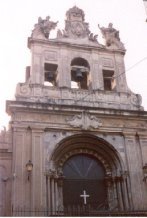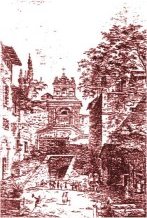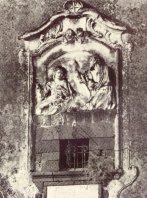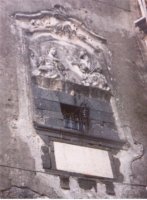Piazza Santo Carcere, was built after the earthquake of the 1693 on the ancient oratorical of St. Pietro. "It was erected close to a bastion including the Roman rests of the secret in which S. Agatha would have been imprisoned. Within the baroque prospectus, in the second half of the 1700, it was rebuilt the grandious svevian portal that until the 1693 adorned the biggest door of the Cathedral. On the shutter of the archvaults, that recall the various decorative motives engraven in the columns opened in splayed jambs, they are sculptures that, by the Guelph part, were interpreted like allegorical figuration wanted by the emperor Fred II to humiliate Catania, ribelled in the 1232, and the Church" (Vito Librando). The jail of the Patrona is composed of two little rooms. In the former, there is a small altar. The latter, of narrow and lengthened form and with a barrel vault, is the cell where S. Agatha exhaled.It is illuminated by a small window with the bars, under which, from the external part, engraven in an ancient marble, there is the story of the death of the Catanian Virgo. Close to the door of the entry of the jail, there is a stone with the footmark left from the bloody foot of the saint and then engraven, immediately after the death of S. Agatha, by the catanians inhabitants. A headstone remembers an episode. Many years ago, the priest Letterio Lo Giudice arrived at Catania from Messina. The religious man visited the jail and stealed, because of his devotion, two fragments of the stone in which there is the footmark. When however, with the boat, he was going to leave Catania, a violent storm stopped him. He could leave Catania only after he redelivered the two bits of stone.
 |
 |
 |
 |



